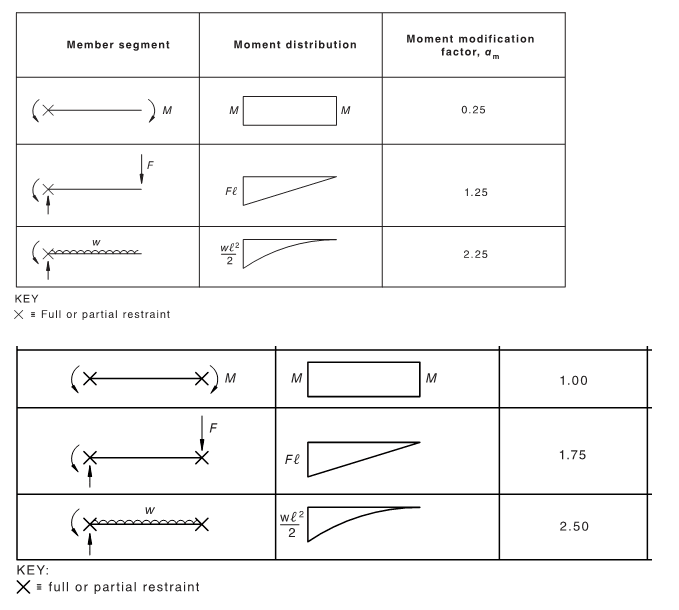structuralAutoMatt
Structural
- Mar 28, 2022
- 6
I am designing a steel embedded pile, I am in charge of the pile design given vendor supplied loading at the top of pile. The top of pile loading consists of a shear, axial, and negative moment, as shown in the attached sketch. Currently I am using the unbraced length of the pile to be 12" below grade, using LPile to get the design moment as this location, and checking the unbraced portion of the pile for LTB, flange buckling and combine force per AISC 360, chapter H.
1) This 12" is an assumption is there a better way to calculate the location of this point?
2) The maximum moment occurs below this point, I am assuming the pile is fully braced below this point, so am only checking plastic bending at this for this maximum moment demand. For these checks I am using the effective length method with K = 2.1, assuming the pile top is free to rotate and translate. My question is that if a negative moment is being transferred to the top of pile is this assumption correct, can I instead use a K = 1.2? Does this depend more on the geometry of the connection or is knowing that that connection transfer this negative moment into the pile enough to say that the pile is free to translate but not rotate? In LPile the output gives me a curvature of -0.00002 rad/in at the top of pile. A curvature of 0 represents a fixed connection, correct?
3) The next question is that is, should Cb = 1.0? or since the a moment is transferred into the pile can I assume it is braced and calculate Cb per F1-1?
Thanks in advance.
[URL unfurl="true"]https://res.cloudinary.com/engineering-com/image/upload/v1648491055/tips/EmbeddedPileSketch_lxhha7.pdf[/url]
1) This 12" is an assumption is there a better way to calculate the location of this point?
2) The maximum moment occurs below this point, I am assuming the pile is fully braced below this point, so am only checking plastic bending at this for this maximum moment demand. For these checks I am using the effective length method with K = 2.1, assuming the pile top is free to rotate and translate. My question is that if a negative moment is being transferred to the top of pile is this assumption correct, can I instead use a K = 1.2? Does this depend more on the geometry of the connection or is knowing that that connection transfer this negative moment into the pile enough to say that the pile is free to translate but not rotate? In LPile the output gives me a curvature of -0.00002 rad/in at the top of pile. A curvature of 0 represents a fixed connection, correct?
3) The next question is that is, should Cb = 1.0? or since the a moment is transferred into the pile can I assume it is braced and calculate Cb per F1-1?
Thanks in advance.
[URL unfurl="true"]https://res.cloudinary.com/engineering-com/image/upload/v1648491055/tips/EmbeddedPileSketch_lxhha7.pdf[/url]


